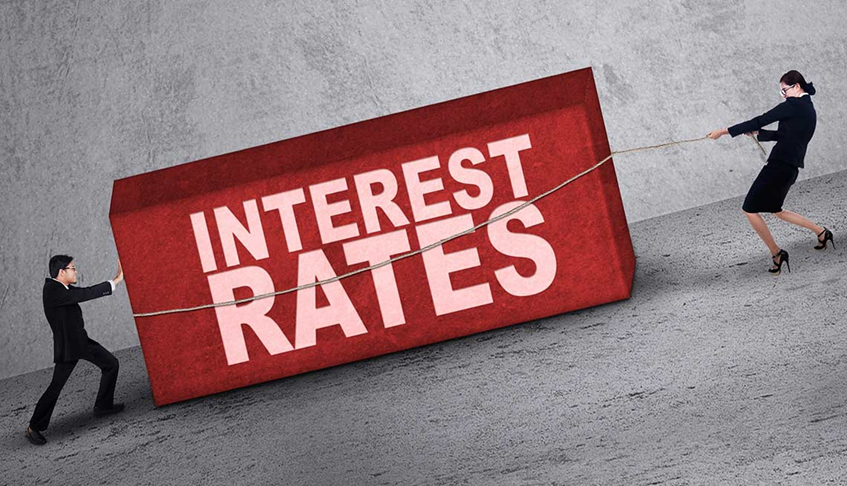How Investors Can Win as Interest Rates Rise

© AARP
How Investors Can Win as Interest Rates Rise
If you have a savings account or variable-rate debt, you might be aware that interest ratesare rising.
But a bit of strategy can help you profit from rising interest rates and avoid a few potential pitfalls.
Most interest rate movements are driven by the monetary policy of the Federal Open Market Committee. In September, the FOMC approved a rate rise to 2.25 percent. The Fed has indicated another boost to 2.5 percent in December with an increase to 3 percent in 2019 and 3.4 percent in 2020. According to the Summary of Economic Projections for the Median Fed Funds Rate published by the Federal Reserve Bank of St. Louis, rate hikes will level off in 2020.
Here are a few ways investors can win while interest rates rise.
Savers can enjoy rising interest rates with money market mutual funds. An easy way to profit from rising rates, is investing your emergency cash in a money market mutual fund at Charles Schwab Corp., Fidelity or other brokerage houses, experts say.
But don't confuse a money market mutual fund with your bank's money market savings account. The former is sold through an investment broker and typically carries a higher rate compared with the savings product from your bank.
David Mullins, owner of David Mullins Wealth Management in Richlands, Virginia reminds investors to become "rate shoppers" and compare interest rates earned on checking accounts, savings, and money market accounts as well as certificates of deposit.
Mullins says it's important for savers to note that today is not like the past when decent returns were nowhere to be found. While current bondholders face a mixed bag. It's well known that as interest rates rise, the value of existing bonds decline. That's because existing bonds must compete with the newer issues that will offer higher yields.
Some wealth advisors recommend investors to keep bond maturities for the short to intermediate term until interest rates plateau. For investors with bond funds, as they reinvest their dividends, new money will be reinvested in bonds with higher yields. That will keep returns growing and offset the discomfort of small declines in the principal value of your fund.
"Ultrashorts are built for investors who want to reduce their interest-rate exposure while gaining better yields than similar maturity government securities," says Randall Bauer, senior vice president at Federated Investors in Denver.
[Read: 6 Things to Know About Faith-Based Investing.]
An ultrashort bond mutual fund owns various fixed investments, such as government, mortgage-backed and corporate bonds. With maturities from three months to a year, the less sensitive to declines from rising interest rates.
Bauer recommends ultrashorts to investors who are comfortable with slightly more credit risk than the safer money market mutual funds. The BBH Limited Duration Fund (ticker: BBBIX) boasts a 2.15 percent one-year return with a 0.28 percent expense ratio, or $28 annually per $10,000 invested.
David Blatt, CEO of CapStack Partners in New York, says, "Investors could consider floating rate bonds or bond funds to capture the upside of growing interest rates, which means growing payments."
A floating rate bond's interest amount changes in line with market interest rates or other external factors, while the principal value remains relatively constant.
Mortgage securities may be a good place to invest. Blatt also likes mortgage rate real estate investment trusts – known as REITs. He touts that the mortgage REITs growing dividends because of rising rates.
Patrick Healey, founder and president of New Jersey-based Caliber Financial Partners, is another fan of a variety of REITs. He suggests commercial mortgage REITs. This type of REIT originates and buys mortgage loans secured by commercial properties, such as office buildings, industrial warehouses and hotels.
Healey likes the Blackstone Mortgage Trust (BXMT) with a juicy forward yield of 7.26 percent and Apollo Commercial Real Estate Finance (ARI) with a 9.8 percent forward yield. Just remember that yields can change and so can the principal value of the investment.
Investors should consider how rising interest rates may affect their stocks. Despite a bumpy stock market this year, most wealth advisors say there's little reason to panic.
During the previous 30 years, there were six major periods with rising interest rates. The market rose during five of those times and only fell slightly during one lagging period, according to an analysis generated from using Kensho technology.
During those same six periods the best performing sectors in descending order were information technology, consumer discretionary, financials, industrials and materials. While investors may want to speculate sectors in which to invest, they can remain diversified and continue with their existing investment strategy. The past is not a predictor of the future and sector picking is a speculative endeavor.
Jason Resposa, co-founder and CEO of MyBankTracker.com in New York, recommends staying the course, "Even if rates are rising, I wouldn't take money out of the market to invest in a savings account only to lose value to inflation."
Long-term investors typically win by designing an investment portfolio in line with their age and risk tolerance and staying the course. Ultimately, if you can't invest your money for the long term, you should probably remain in cash investments.
Source:
| Currency | Exchange rate | Change |
| USD | 9.2470 | 0 |
| EUR | 10.8578 | 0 |
| RUB | 0.1137 | 0 |
| CNY | 1.3247 | 0 |

